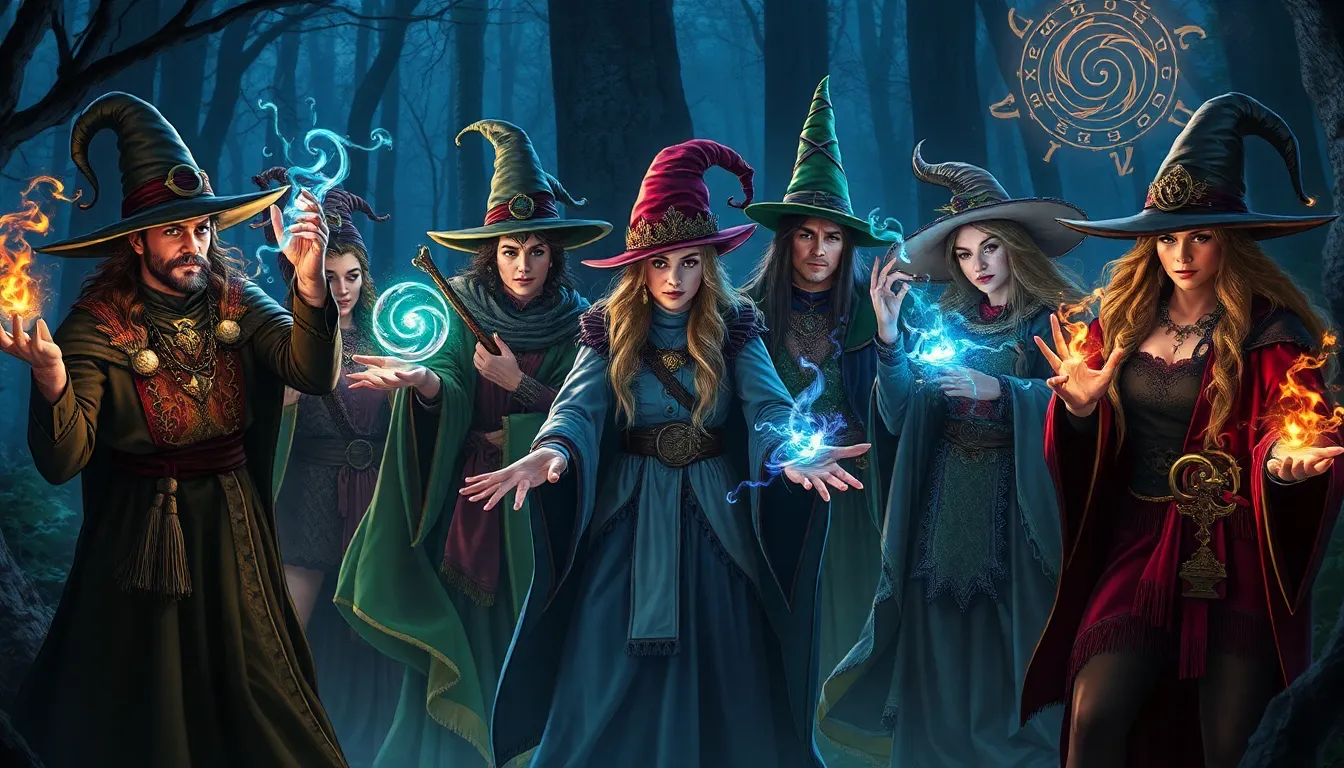Imagine a world where waving a wand could solve your everyday problems—like making your coffee magically brew itself or turning that pesky traffic jam into a scenic drive. Welcome to the enchanting realm of spellcasting systems, where magic meets strategy and creativity knows no bounds. Whether you’re a seasoned sorcerer or a curious newbie, understanding the intricacies of spellcasting can elevate your adventures to new heights.
Table of Contents
ToggleOverview of Spellcasting Systems
Spellcasting systems encompass various methods and rules governing how magic is used in different settings. Numerous frameworks exist, each with unique mechanics and narrative implications. Common systems include Vancian casting, which emphasizes memorization and preparation. In contrast, spontaneous casting allows users to conjure spells at will, reflecting a more dynamic approach.
The rules of spellcasting can vary significantly among systems, influencing gameplay and storytelling. Many systems categorize spells by schools of magic, such as evocation or illusion. Each school contains spells with distinct effects, enabling practitioners to specialize in particular types.
Another aspect of these systems involves resource management, impacting strategy during adventures. Some systems require mana or energy points, creating a finite pool of spells available for use. Practitioners must balance their spell usage to avoid depletion of these resources.
Adaptation of spellcasting in various contexts also plays a crucial role. Standard fantasy settings often incorporate rigid rulesets, while others may embrace fluidity and improvisation. Worlds featuring ancient tomes or lost artifacts may introduce rare spells or unique rituals, enriching the experience.
With the right understanding and practice, practitioners can escape mundane challenges through mysticism. Each system offers a different flavor of magic, catering to the preferences of diverse players. Choices made in spellcasting often influence interpersonal relationships, alliances, and conflicts within the narrative.
Types of Spellcasting Systems

Different spellcasting systems exist, each presenting unique mechanics and philosophies. Understanding these systems enhances one’s grasp of magical practices.
Traditional Spellcasting
Traditional spellcasting emphasizes structured methods, often rooted in ancient lore. Vancian casting exemplifies this approach, requiring practitioners to memorize spells. Memorization can limit spontaneous casting, making it vital to choose spells carefully before encounters. These systems may include specific rituals, incantations, and the use of magical components. Practitioners often attain spells through study or inheritance, focusing on disciplines like evocation or divination. Resource management plays a crucial role, as power limits can dictate the number of spells available. Such systems create a sense of gravity, reflecting the weight of magical tradition.
Modern Spellcasting
Modern spellcasting incorporates flexibility and creativity. Various systems allow practitioners to cast spells on-the-fly without prior memorization. This spontaneity encourages adaptability in challenging scenarios, enabling quick responses to threats. Often, these systems utilize mana pools or energy points, streamlining resource allocation. Players might find unique spells accessible through experimentation or collaboration. Additionally, modern frameworks frequently embrace storytelling, integrating spells seamlessly into character development. Enhanced options for customization empower practitioners to define their magical identity, making each casting experience unique.
Key Components of Spellcasting Systems
Understanding spellcasting systems requires a closer look at their foundational elements. These elements shape how magic operates within different frameworks.
Magical Energy Sources
Magic relies on various energy sources. Practitioners may draw power from innate abilities, surrounding environments, or dedicated mana pools. Each source influences spellcasting style. For example, spells could require tapping into personal energy or harnessing ambient magical energy. Systems may also designate energy thresholds, limiting the number of spells cast within a timeframe. Many enhanced mechanics involve regeneration rates or energy expenditure, making resource management crucial during encounters. Successfully leveraging these energy sources empowers practitioners to execute powerful spells efficiently.
Spell Components and Rituals
Spellcasting often incorporates specific components and rituals. Components may include rare ingredients, symbols, or incantations which provide spells with effectiveness. Rituals add structure, sometimes requiring ceremonial practices to enhance spells’ potency. Systems may feature different schools of magic, each with unique components tailored to their specific requirements. For instance, necromancy might utilize bones or dark artifacts, while evocation could involve elemental materials. Practitioners often follow rituals, connecting them to the larger lore of their magical worlds. Mastery of these components and rituals appears vital for successful spellcasting, further enriching the magical experience.
Comparing Spellcasting Systems Across Cultures
Different cultures present varied approaches to spellcasting. These differences often reflect unique historical contexts and belief systems.
Western Traditions
Western traditions often center around structured methods steeped in ancient lore. Practitioners may rely on grimoires, which are books of spells and rituals. These texts guide spellcasting, with many spells requiring specific components and incantations. Notably, Vancian casting is prevalent, emphasizing memorization and preparation. Rituals serve not only to enhance spell effectiveness but also to connect practitioners with their cultural heritage. The intricate relationship between structure and creativity in Western spellcasting highlights its deep roots in mythology and folklore.
Eastern Traditions
Eastern traditions frequently incorporate fluidity and adaptability in spellcasting. Practices such as Taoist sorcery or Buddhist rituals emphasize harmony between the caster and the surrounding environment. Drawing energy from nature or self, practitioners often engage in spontaneous casting. Elements like meditation and mindfulness play crucial roles, fostering a deep connection to the arts of magic. Rituals in Eastern systems often embody philosophical principles, encouraging practitioners to reflect on their intentions and the universe. This approach showcases a more holistic understanding of magic, blending spiritual growth with spellcasting practices.
Exploring the intricacies of spellcasting systems reveals a rich tapestry of magical practices that vary across cultures and traditions. Each system offers unique methods and rules that shape how magic is experienced and utilized. Whether rooted in tradition or embracing modern flexibility, practitioners can find their own path to mastery.
Understanding the key components of spellcasting enhances the overall experience, allowing for strategic resource management and creative spell usage. As individuals delve deeper into these systems, they discover not only the power of spells but also the profound connections to their magical heritage. Ultimately, the journey through spellcasting is as much about personal growth and exploration as it is about wielding magic itself.








